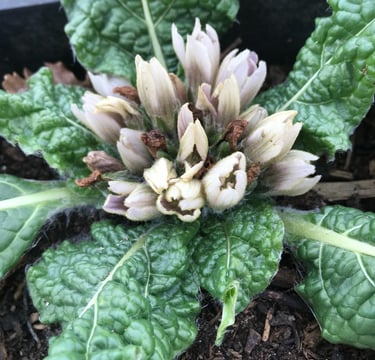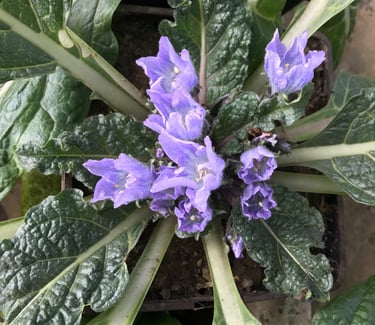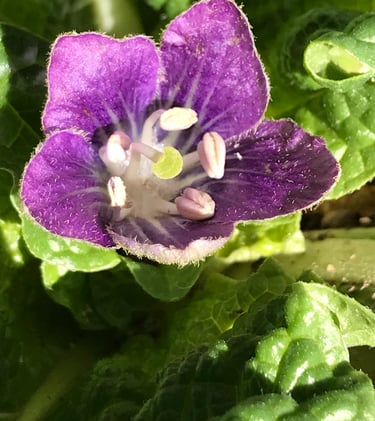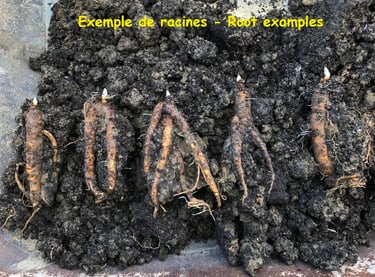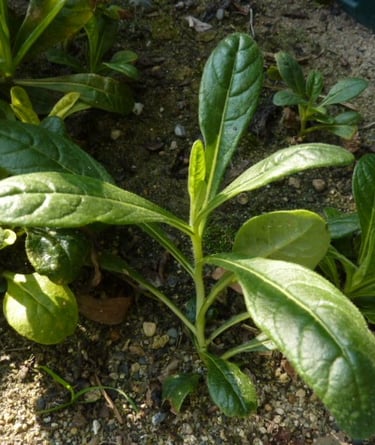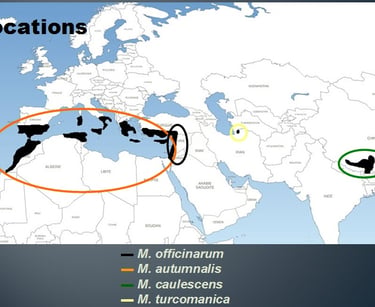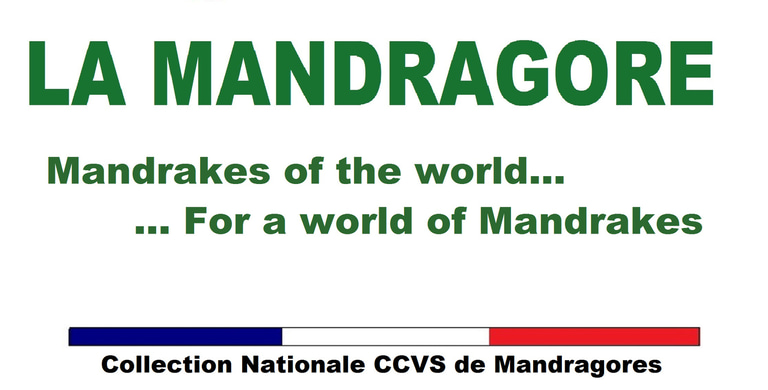Mandragora genius is represented by only 4 species at global level
All mandrakes species have a large tap root, which may be divided in several legs.
All mandrakes are perennial plants and need to be grown under external conditions (unless you have a performant indoor system!) as they need natural conditions (light, temperature, and rainfall).
MANDRAGORA OFFICINARUM (L.)
It is from far the most commonny known, and from ages!
C'est de loin la plus connue des mandragores et ce depuis la nuit des temps
Geographical spread : Europe, East up Balkan region (but may have disappeared from its natural growing sites?)
Growing period : january to May (and dormancy the rest of the year)
Plant shape: Large leaf rosette at ground level, with a diameter of 30 to 80cm
Flowering: Whitish/greenish, sometime with purple lines, during january - february in the centre of the plants
Fruits: Greenish-yellowish, VERY SMELLY , rounds, 3 to 5 cm diameter
MANDRAGORA AUTUMNALIS (Bertol.)
(This is one of the most wellknown with M officinarum (and many identification confusion between both)
Geographical spread : Mediterrean surrounding countries (Spain, Italy, Greece, Israël, middle east, ...)
Growing period : August to February/March (and dormancy the rest of the year)
Plant shape: Large leaf rosette at ground level, with a diameter of 30 to 70cm
Flowering: Light/dark blue from september to November, depending regions
Fruits: Orange, VERY SMELLY , oblong, olive size, 2 to 3 cm diameter
MANDRAGORA TURCOMANICA (Mizg.) - Turkmenistan Mandrake
It is a very rare plant in its natural habitat / growing area. only limited in few places. It is also the only mandrake with leaves with noticeable musk/smoky smell.
Geographical spread : south Turkmenistan
Growing period : October/November to May (and dormancy the rest of the year)
Plant shape: Very large leaf rosette at ground level, with a diameter of 50 to 150cm
Flowering: Dark blue from september to January, depending regions
Fruits: Greenish-yellowish, VERY SMELLY , rounds, 5 to 6 cm diameter
MANDRAGORA CAULESCENS (C.B.Clarke.) - Himalayan Mandrake
It is not a rare a rare plant in its habitat but the fact it is extremely difficult to grow it in Europe, make it very rare and challenging!
Geographical spread: Himalaya (South west China & North-East India: Bhoutan).
Growing period: May to september (and dormancy the rest of the year)
Plant shape: plant with 1 or several aerian shoots; 30-50cm tall
Flowering: Black (with variations of yellow stripes) in June/july. Flowers displayed along shoots
Fruits: Greenish, rounds, 1 cm diameter
